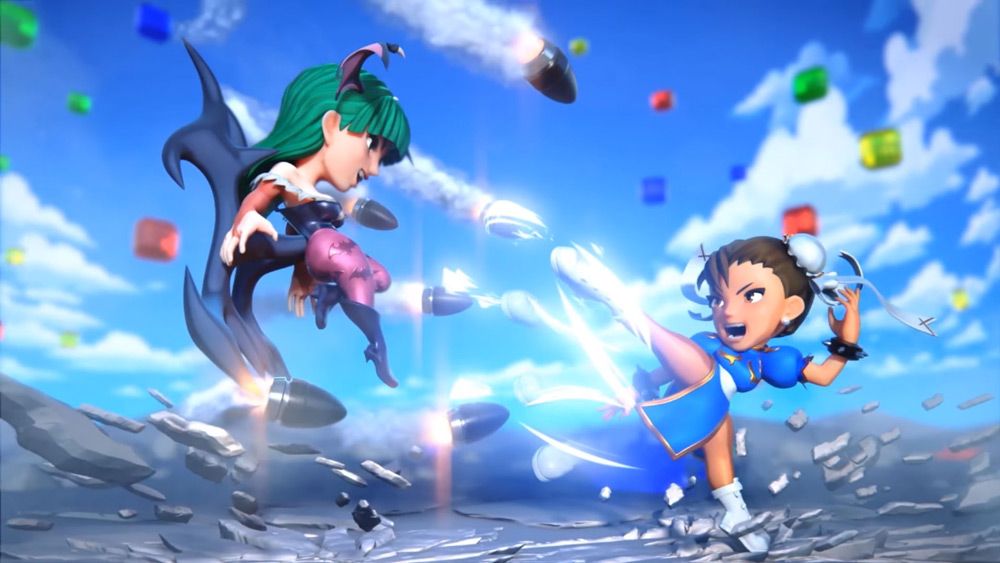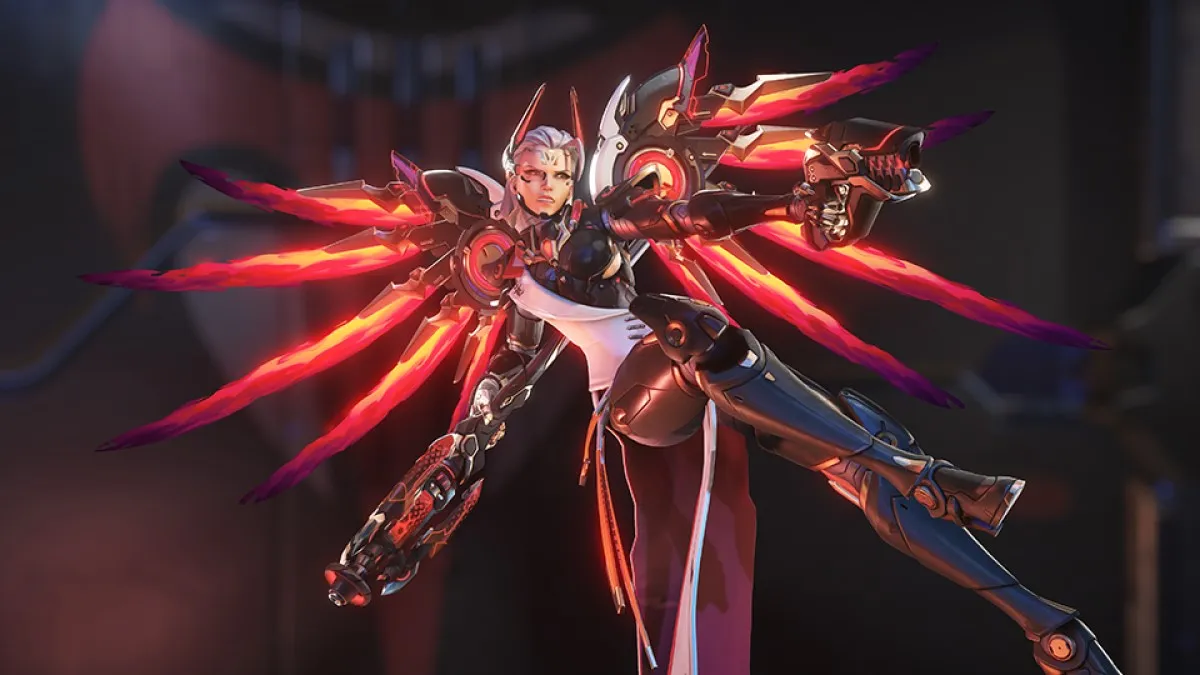A bit of a gem
Puzzle Fighter’s rocky road to a worldwide release ended last month when Capcom pushed it out the doors just before Thanksgiving to a worldwide audience. I’ve followed the game since it was announced and was disappointed when I learned it wouldn’t work on my mid-tier Android phone. So instead of filling those long, early morning commutes, it would be the last game I play before I went to bed each night.
Turns out that’s a bad idea because two weeks later the addictive nature of Puzzle Fighter continues to keep me up far past my bedtime.

Puzzle Fighter (Android, iOS [reviewed on a 2017 iPad])
Developer: Capcom Vancouver
Publisher: Capcom
Released: November 22, 2017 (WW), September 27, 2017 (AU, Canada)
MSRP: Free-to-Play w/ In-App Purchases
I completely missed the boat on Super Puzzle Fighter II Turbo and every sequel to it so I won’t be able to compare those titles to this. Puzzle Fighter’s gameplay is built around a simple two-gem drop system. I drop different color gems on the puzzle grid, trying to combine them into squares and rectangles called Power Gems that will unleash massive damage when I smash them with a crash orb or diamond, the latter of which appears every 25 drops. That damage not only hurts my opponent with a flashy attack but can also fill their puzzle board with gems on a timer that can really screw them over. These gems can come back to bite me in the ass however depending on how my opponent has reacted to them.
The more gems and Super Gems I smash, the higher my super move meter fills. When that’s available, all action on the puzzle screen stops as I unleash a not-as-devastating-as-you-might-think attack on my opponent. There is a good amount of back and forth between me and my opponents. Occasionally I am completely blown out by a massively overpowered foe, but with practice, I am able to hold my own. The super move pulls me out of a lot of jams. It’s quite a thrill to nearly run out of life only to emerge victorious because I was able to unleash a three power gem combo and let loose my super move before they’re able to finish me off.
My fighting team consists of my main fighter and two supporting characters which only come into play when I smash a Power Gem. Each fighter in the game has a gem affinity, so when I clear that color gem on the board, the attacks hurt just a little bit more. If my fighter and the support characters share the same affinity, they’re a stronger team.
There are two game modes in Puzzle Fighter: Online Versus and Missions. The early hour of the game is a bit of a mixed bag. I start with just one fighter in my crew but can be paired against an opponent with a full deck of fighters. It doesn’t happen often, but when it does I am at an extreme disadvantage. After my initial matches, I’m upgraded to Bronze class, which is made up of several sub-classes. Beyond it are silver, gold, etc.
As I win, I improve my ranking and climb those sub-classes. Lose and I can drop to a lower sub-class. What can and will be difficult here is fighting against people who are in a much higher sub-class than me because all bronze or silver or gold fighters are treated as the same. On paper that sounds unfair. In practice, it kind of is but I can still eek out a win.
For the first five matches I win, I take a spin at E. Honda’s sushi shop for my reward. This is the delightfully designed loot box scheme of Puzzle Fighter. What I appreciate is I don’t have to wait to open these boxes. I am given access to their contents ASAP. After those first five wins, the shop closes down for about six hours.
Missions are far more limited than online play. Like the sushi shop, each of the three challenges has a cool-down timer. Basically, this mode is a more hands-on replacement of the timed log-in rewards found in other free-to-play games. These matches against a computer opponent are more of a nuisance than anything else. They’re far too easy no matter the difficulty level. Win — which I always do — and I get a basic loot box that usually contains a minimal amount of cards.
For much of Destructoid’s audience, being a free-to-play mobile game that requires a consistent internet connection to play is enough to keep them away. It’s a deal breaker as I’m sure many of you will tell me in the comments. The graphics can be seen as a whole different reason to skip it. Like a Xoloitzcuintli or a really ugly child, the artwork here can take some getting used to. Not the stages, they’re beautiful, but the fighters who all look like a Funko Pop! fucked a Precious Moments figure can be a turn-off. I don’t mind them, but then again I rarely look at them in the heat of battle.
Bouts between fighters are strictly for audiences and replays as I don’t dare take my eyes off the puzzle portion of the screen to get a glance of the madcap mayhem happening just above. I get hints of the actions with my peripheral vision, but all focus remains on my gem board lest I let my opponent get the best of me. And that happens a lot. I won’t lie; I lose quite a bit here. I don’t always make the right choices on where I place my gems, don’t always get the combo I thought I was going to get, and sometimes my opponent is simply in a class all their own. I also lose quite a bit because the odds are not in my favor when getting my loot.

My team right now is okay. The past two weeks of play have allowed me to level up my core squad with prizes pulled from the loot boxes. New characters, costumes, gems, and coins are all possible rewards as are special attack cards. That last point may be a deal breaker for some and can be trouble for people like me who don’t put any real money into the game. Early on, I am able to strengthen my small team of fighters quickly with more powerful special attacks. But as I unlock more and more fighters, those cards start to thin out and the leveling process slows to a crawl. And forget about trying to level up rare attack cards with any sense of regularity.
I get why the developers did that. It makes sense from a free-to-play design standpoint, but it can lead to some incredibly unbalanced matches. Worse, it keeps me from experimenting with the fighters I unlock. Characters don’t have much variety in Super Gem formations needed to pull off special attacks, but after two weeks I’m kinda fucking over playing as Chun-Li, Haggar, and Frank West all the time. I want to play as M. Bison and E. Honda, but I’m not going to if it means losing an ass-load of matches because their special attacks are vastly underpowered. Character levels are tied to how much I level up their special attacks. Again, this pushes me to keep close to my initial fighters who are more powerful rather than branch out to the characters I unlock later.
It can be easy to drop the game for the day as soon as I’m done with the missions and nab my five wins, but extended play sessions — a potentially tedious exercise offering meager coin and ranking point rewards — pay off in the long run with Puzzle Fighter’s seasons. Every win I get online adds to my season score. At the end of the season that took place during my review period, I didn’t rank that high but still walked away with a lot of coins and gems, a new fighter and many special attack cards to strengthen my team. Seeing how rewarding these seasons are means I won’t be putting any money into the game, but goddamn if it isn’t trying to get me to do so.
Puzzle Fighter has the standard in-app purchase system we’ve come to expect. Real money can be spent on gems that can be used to buy loot boxes or I can use them to purchase the individual fighter on sale for the day. That is a very tempting prospect. While the roster here isn’t nearly as diverse as I want it to be, continued support will get it there. As of this writing, Servbot is on the way and there is a cavalcade of characters from Capcom’s history I wouldn’t mind earning some gems to unlock if I’m unable to advance high enough in the rankings where they become possibilities in loot boxes.
With how the reward and progression system works, it would be easy to write off Puzzle Fighter as another beloved series shamelessly monetized for the mobile era. And I’m sure many people will do just that. While a part of me wishes there was a more amicable way of doling out special attack cards, I’m really having far too much fun with it to care all that much.
[This review is based on a retail version of the game downloaded for free from the App Store.]














Published: Dec 7, 2017 03:00 pm